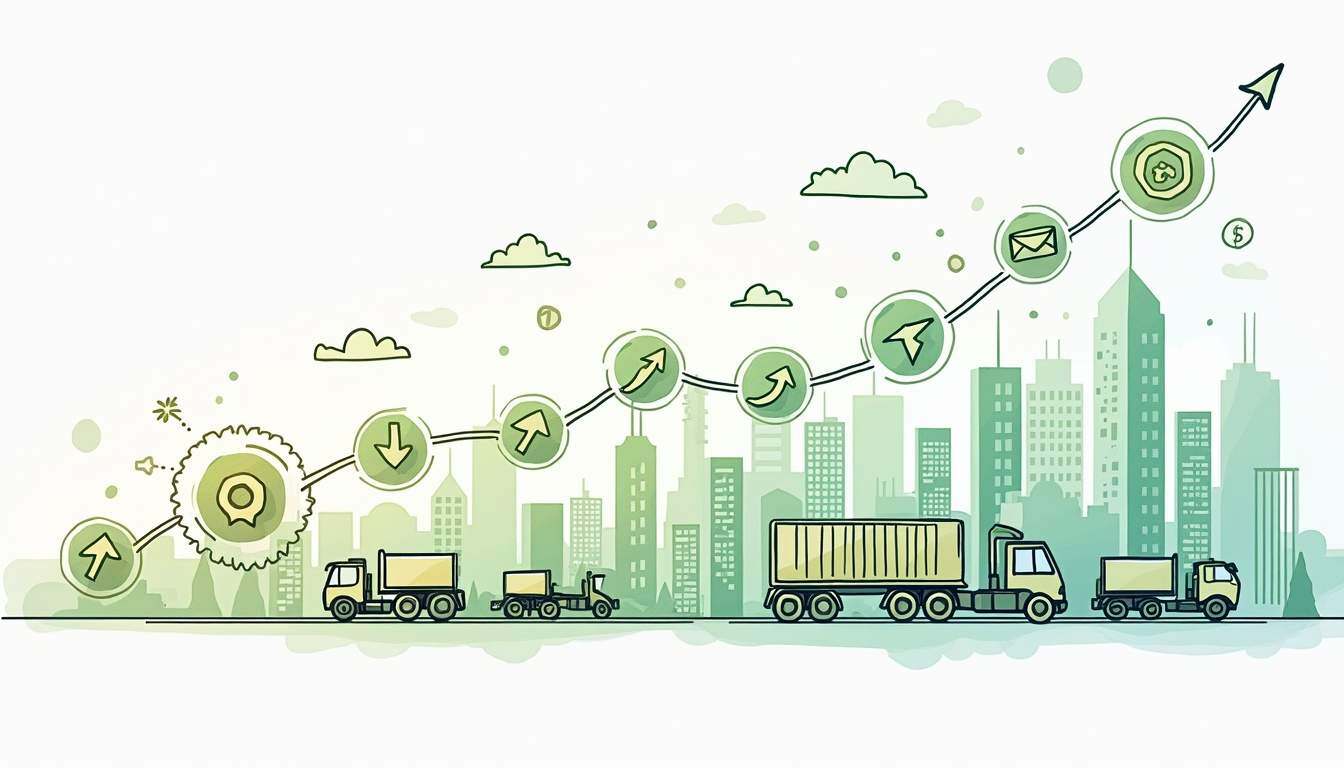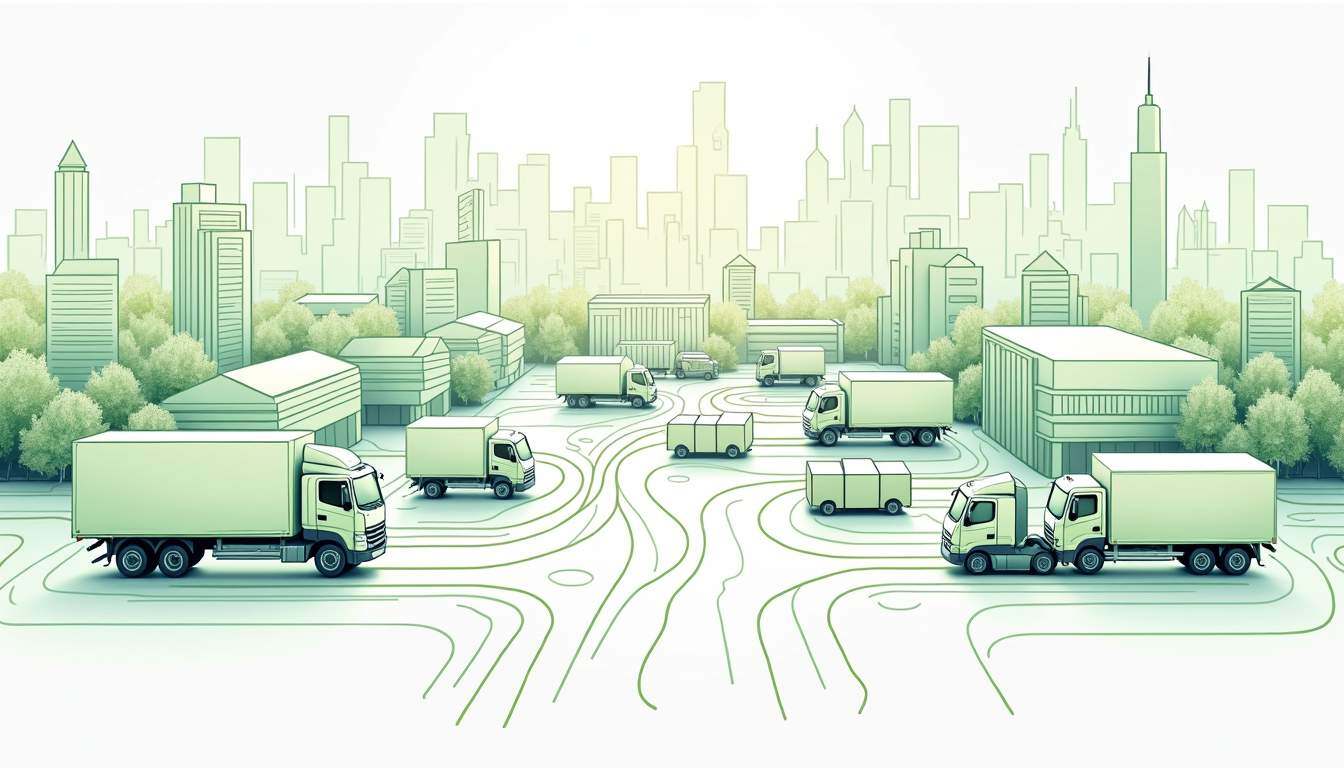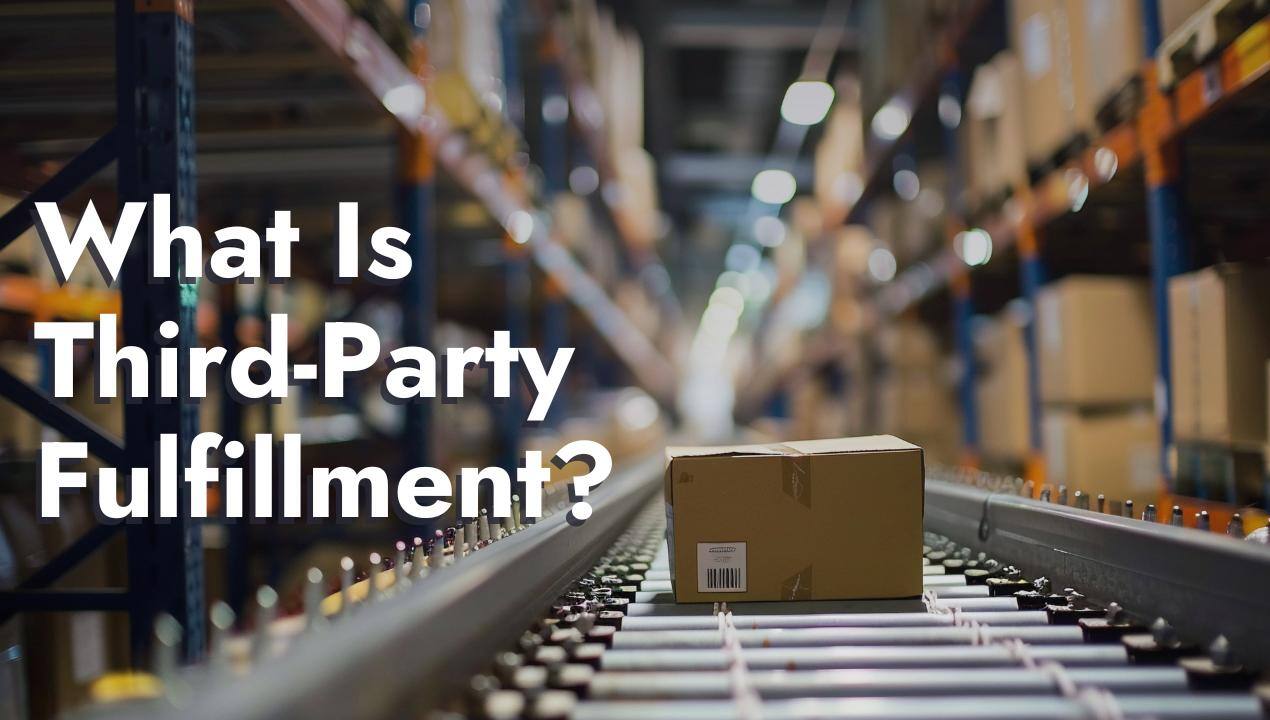Share this
What Does Scalable Order Fulfillment Mean? What Can It Mean for You?
by Shipfusion Team on Apr. 15, 2025

For ecommerce brands on the rise, operational agility can make or break long-term success. One key driver of that agility? Scalable fulfillment. It’s not just about getting packages out the door – it’s about building an infrastructure that can flex with demand, absorb rapid growth, and consistently deliver the kind of experience that turns first-time buyers into loyal customers.
This article dives deep into what scalable fulfillment really means, why it matters at every growth stage, and how to implement it in ways that preserve speed, accuracy, and profitability without adding complexity or overhead.
What Is Scalable Fulfillment?
Scalable fulfillment is the ability to adjust your order processing and delivery operations in response to fluctuations in order volume without sacrificing accuracy, delivery speed, or the customer experience.
For early-stage brands, this might mean transitioning from in-house packing to a third-party logistics (3PL) provider. For more established players, it often involves adding more warehouse nodes, optimizing software integrations, or improving visibility into inventory movement. In every case, scalability is about meeting today’s demand while preparing for tomorrow’s – without waste or chaos.
Why Scalable Fulfillment Is a Growth Lever
While product development and marketing get most of the attention, ecommerce fulfillment is often the unsung driver of customer satisfaction and retention. Delays, stockouts, or broken tracking can unravel trust quickly, especially when expectations are high.
Here’s how scalable fulfillment directly supports growth:
-
Customer Retention: Consistent, accurate delivery earns trust. That’s hard to maintain without systems that can scale.
-
Cost Control: Efficient fulfillment reduces carrying costs, limits overstaffing, and minimizes returns caused by errors.
-
Channel Expansion: Want to launch on a new marketplace or in a different region? Scalable fulfillment ensures you’re ready to deliver from day one.
-
Seasonal Agility: Black Friday. Product drops. Surprise influencer mentions. A scalable model keeps operations calm during demand surges.
In short: scalability isn’t a back-office issue – it’s a strategic advantage.
Core Components of Scalable Fulfillment
While every ecommerce business has different needs, scalable fulfillment strategies share a few key building blocks:
1. Technology-First Infrastructure
Manual processes can’t keep up with growth. Fulfillment scalability starts with automation.
-
Order Management Systems (OMS) centralize order data from multiple sales channels, allowing teams to prioritize, track, and route shipments automatically.
-
Warehouse Management Systems (WMS) handle location-level optimization, guiding staff through picking, packing, and restocking with barcode scans and system logic.
-
Shipping Software enables rate shopping, batch label printing, and branded tracking updates.
-
Inventory Visibility across all locations prevents overselling and enables faster reallocation of stock to meet demand shifts.
Brands that invest early in tech infrastructure avoid the “duct tape” phase where separate systems don’t communicate and growth stalls due to inefficiency.
2. Strategically Located Fulfillment Centers
Scalable fulfillment is also about reach. The more you reduce the physical distance between inventory and customers, the cheaper and faster shipping becomes.
Rather than operating from a single warehouse, many brands partner with 3PLs that offer a network of fulfillment centers across North America. This allows for:
-
1- to 2-day ground shipping to most major metros
-
Lower shipping costs through zone optimization
-
Redundancy in case of weather delays or capacity issues
Even modestly sized brands can compete with larger players when inventory is stored closer to the end customer.
3. Reliable Carrier Partnerships
Shipping is often the final brand touchpoint. A scalable fulfillment strategy ensures that it doesn’t become a liability.
Working with a 3PL that has pre-negotiated rates with major carriers (UPS, FedEx, USPS, regional partners) gives you both cost efficiency and delivery consistency. It also reduces the burden of managing shipping performance in-house, so your team can stay focused on revenue-generating tasks.
Implementation Strategies for Scalable Fulfillment
Scaling your fulfillment capabilities doesn’t require a complete overhaul overnight. It’s more about stacking the right strategies, one decision at a time.
Invest in Automation from Day One
Brands that wait too long to adopt automation often face operational bottlenecks that damage the customer experience. Even if you’re only shipping 50–100 orders a day, systems that streamline packing, inventory management, and returns can free up team capacity and reduce human error.
Popular entry points for automation include:
-
Shopify apps that sync inventory and push tracking updates automatically
-
Barcode scanners for pick/pack operations
-
Automated reorder point settings based on sales velocity
These tools don’t just add efficiency – they provide the data foundation for long-term scale.
Expand Through Multi-Warehouse Fulfillment
As order volumes increase – or customer locations diversify – single-location fulfillment becomes a limiting factor.
Multi-warehouse fulfillment solves this by splitting inventory across multiple nodes, ensuring:
-
Lower shipping zones = cheaper shipping rates
-
Faster delivery windows = happier customers
-
Regional redundancy = better performance during disruptions
The key is maintaining real-time inventory visibility and smart routing logic to prevent stockouts or overselling across warehouses. A good 3PL partner handles this behind the scenes with their proprietary WMS.
Design for High-Volume Events
Flash sales, product drops, and seasonal spikes are a growth driver for many ecommerce brands, but only if fulfillment can keep up. Scalable fulfillment plans for the stress test before it hits.
This includes:
-
Pre-kitting products or bundles ahead of promotions
-
Ensuring adequate labor or automation is available in the warehouse
-
Staggering drops across time zones to avoid bottlenecks
-
Having a clear escalation plan in case of inventory mismatches
High-growth brands don’t “wing it” on big days – they simulate, test, and reinforce their fulfillment capabilities in advance.
Build a Future-Proof Returns Workflow
Returns may not be the first area you think of when scaling fulfillment, but they’re just as critical. A return process that creates friction adds customer service load and discourages repurchase.
Scalable fulfillment includes:
-
Pre-printed or digital return labels
-
Automated refund workflows
-
Re-kitting or restocking logic based on product condition
-
Reverse logistics tracking
A streamlined, tech-enabled return process supports scale without requiring additional customer support resources.
Best Practices for Scalable Fulfillment Success
Not every fulfillment operation will scale the same way, but some principles are universal. These best practices help brands stay ahead of operational risk as they grow:
Reassess Quarterly
What worked six months ago may now be outdated. Build a quarterly review process into your ops team’s schedule to evaluate:
-
Order accuracy rates
-
Average fulfillment times
-
Inventory turnover and stockouts
-
Warehouse efficiency metrics
-
Customer feedback related to shipping
These check-ins ensure you catch scaling pain points early – before they spiral.
Maintain Strong Supplier Relationships
Upstream delays can break even the best downstream fulfillment processes. Scalable operations include proactive supplier management, such as:
-
Forecast sharing to align production and delivery timelines
-
Safety stock buffers for fast-moving SKUs
-
Regular performance reviews and backup vendor plans
The smoother your inbound supply, the more consistent your outbound fulfillment.
Train for Flexibility
Whether you operate in-house or use a 3PL, your fulfillment team needs clear SOPs – but also the training to adapt when something breaks.
Cross-training staff across picking, packing, restocking, and exception handling can reduce downtime and increase fulfillment resilience, especially during peak periods or staff absences.
Scalable Fulfillment Starts with the Right Partner
Building a fulfillment operation that grows with your business doesn’t require guesswork – it requires the right tools, partners, and processes. That’s where Shipfusion comes in.
As a trusted 3PL partner for growing ecommerce brands, Shipfusion offers more than just warehouse locations. Our platform provides real-time visibility across your entire fulfillment network, while our dedicated Account Managers help anticipate issues before they become problems. From same-day order processing to temperature-controlled storage, we’re built for scale – so you don’t have to compromise accuracy or customer satisfaction as you grow.
Whether you’re launching your next product line, expanding to new markets, or planning for peak season, Shipfusion gives you the infrastructure to move quickly and confidently. Ready to scale your fulfillment? Get pricing today and let’s grow your brand without growing your headaches.
Share this
You May Also Like
These Related Articles

What Does Scalable Ecommerce Fulfillment Mean? What Can It Mean?

What Is Third Party Fulfillment?

Freight Surcharge: What It Means for Your Shipping Costs
- September 2025 (2)
- August 2025 (8)
- July 2025 (16)
- June 2025 (22)
- May 2025 (27)
- April 2025 (27)
- March 2025 (26)
- February 2025 (26)
- January 2025 (34)
- December 2024 (16)
- November 2024 (22)
- October 2024 (22)
- September 2024 (27)
- August 2024 (9)
- July 2024 (8)
- June 2024 (5)
- May 2024 (8)
- April 2024 (7)
- March 2024 (6)
- February 2024 (6)
- January 2024 (5)
- December 2023 (3)
- November 2023 (3)
- October 2023 (5)
- September 2023 (4)
- August 2023 (2)
- July 2023 (1)
- June 2023 (4)
- March 2023 (2)
- October 2022 (1)
- September 2022 (5)
- August 2022 (4)
- July 2022 (7)
- June 2022 (4)
- May 2022 (4)
- April 2022 (6)
- March 2022 (2)
- February 2022 (1)
- January 2022 (3)
- December 2021 (2)
- November 2021 (4)
- October 2021 (2)
- September 2021 (5)
- August 2021 (4)
- July 2021 (4)
- June 2021 (3)
- May 2021 (2)
- April 2021 (3)
- March 2021 (3)
- February 2021 (3)
- January 2021 (2)
- December 2020 (4)
- November 2020 (2)
- October 2020 (4)
- September 2020 (2)
- July 2020 (5)
- June 2020 (4)
- May 2020 (2)
- April 2020 (2)
- March 2020 (4)
- February 2020 (1)
- December 2019 (1)
- May 2018 (1)
- March 2018 (2)
- February 2018 (3)
- January 2018 (3)
- November 2017 (3)
- July 2017 (4)
- March 2017 (3)
- February 2017 (5)
- January 2017 (3)
- December 2016 (4)
- November 2016 (6)
- October 2016 (6)
- October 2015 (1)
- September 2015 (1)
- June 2015 (3)
- May 2015 (3)
- August 2014 (1)
- July 2014 (1)
- March 2014 (1)
- February 2014 (1)